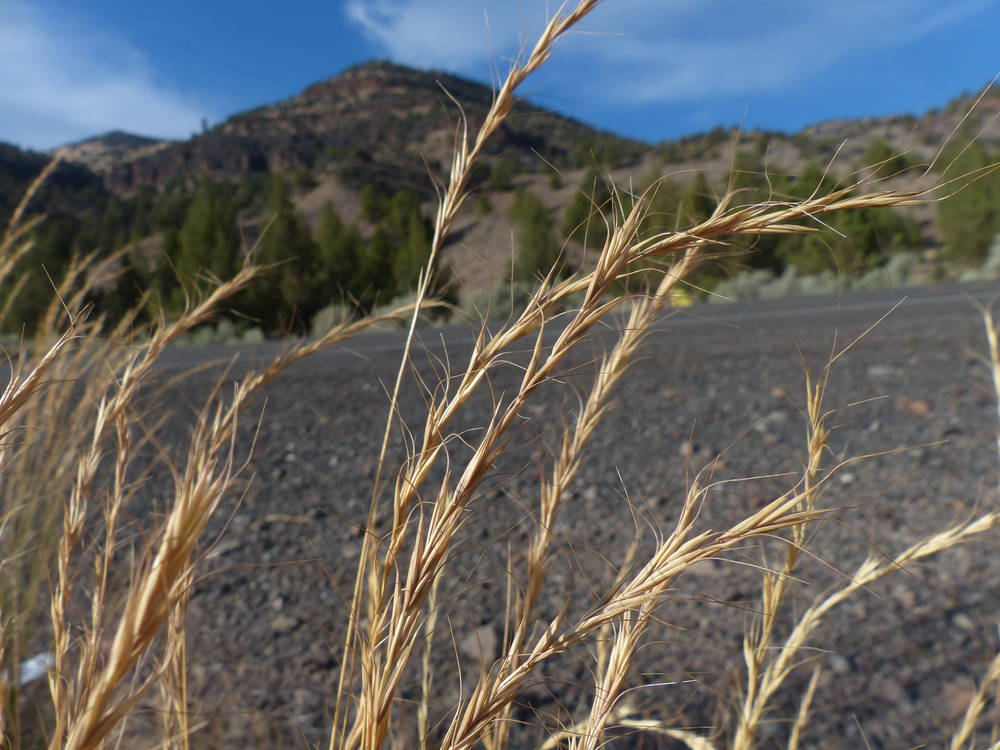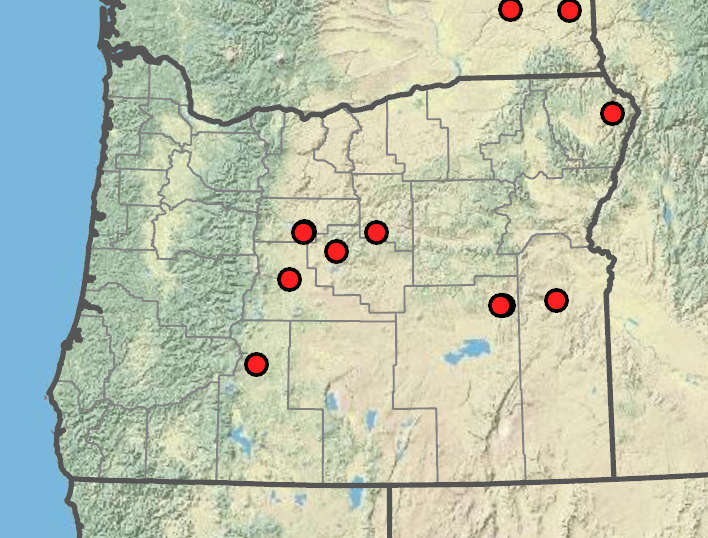Elymus macgregorii
Elymus wawawaiensis
Snake River wheatgrass
erect.
basal sheaths becoming glabrous;
blades to 28 cm × 1.7–5 mm;
inner surfaces densely pubescent or rarely sparsely pubescent.
spikes, 5–20 cm; erect to slightly nodding, 1 spikelet per node;
internodes 5–12 mm;
disarticulation above the glumes; beneath each floret.
10–22 mm long; about twice as long as the internodes, 2–8.5 mm wide, appressed, 4–10 florets.
4–10 × 0.5–1.3 mm, narrowly lanceolate; widest at or below mid-length, glabrous, often glaucous, 1–3-veined; flat or weakly keeled;
margins 0.1–0.2 mm wide; widest near mid-length;
tips usually acuminate, awned or awnless;
glume awns 0–6 mm.
6–12 mm; smooth or slightly scabrous;
margins often sparsely pubescent near the base; longest lemma awns 9–28 mm, strongly divergent.
3.5–6 mm.
Elymus macgregorii
Elymus wawawaiensis
Dry, rocky canyon slopes, disturbed sagebrush steppe, roadsides. 800–1500m. BW, Lava. ID, WA; MT, WY. Native.
Elymus wawawaiensis resembles a vigorous plant of Pseudoroegneria spicata with somewhat more overlapping spikelets. Pseudoroegneria differs in having wider glumes with (3)4–5(7) veins. Elymus wawawaiensis is endemic to the Salmon, Snake, and Yakima river drainages in Oregon, Idaho, and Washington. The “Secar” cultivar of E. wawawaiensis was developed for forage and erosion control and is planted widely in eastern Oregon and elsewhere in the arid West.
Barbara Wilson, Richard Brainerd, Nick Otting



